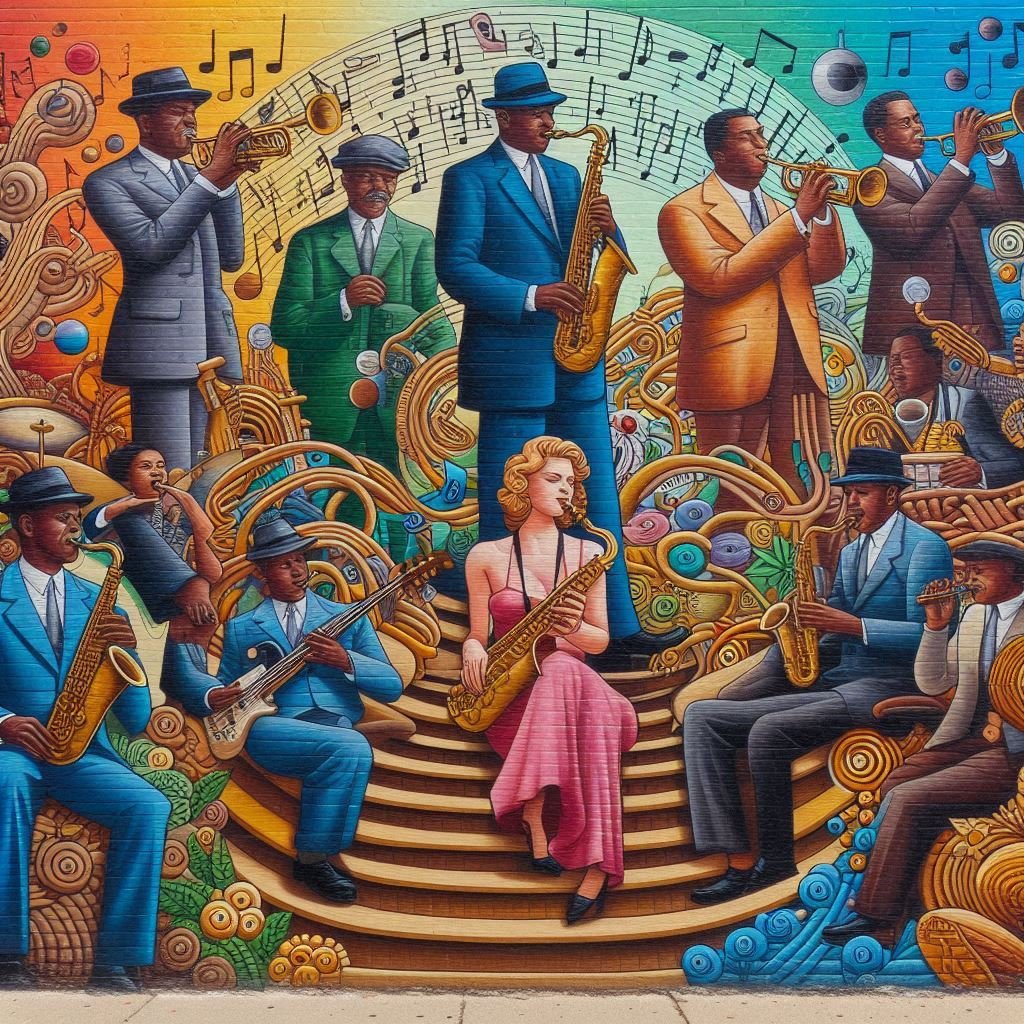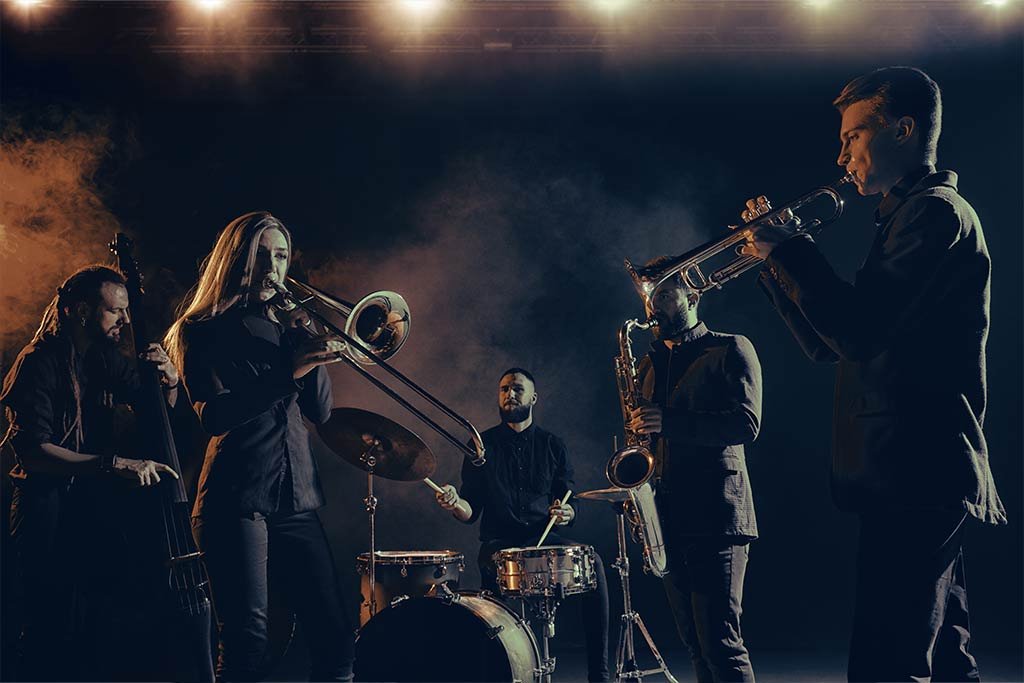
Jazz is one of the most influential and enduring genres of music, with roots that stretch back over a century. Emerging from African American communities in New Orleans, jazz evolved into a global phenomenon, shaping and being shaped by cultural, political, and social movements. From the raw emotion of the blues to the complexity of bebop, jazz has continuously reinvented itself while maintaining its core spirit of improvisation and freedom.
This article will take you through the fascinating journey of jazz, exploring its origins, key developments, and the lasting legacy it continues to have on music today.
The Roots: Blues and Ragtime
Jazz has its roots in the late 19th and early 20th centuries, blending African and European musical traditions. Two key styles that heavily influenced early jazz were blues and ragtime.
Blues:
The blues originated in the Deep South of the United States, particularly among African American communities. It was characterized by its raw, emotional expression and the use of blue notes—notes that are played or sung at a slightly lower pitch than standard. The call-and-response patterns, along with its 12-bar structure, heavily influenced the development of jazz.
Ragtime:
Ragtime was a precursor to jazz that peaked in popularity between 1895 and 1919. It was known for its syncopated, or “ragged,” rhythm, which gave the music a lively and playful feel. Scott Joplin was one of the most famous ragtime composers, and his work helped pave the way for the rhythmic complexity that would later define jazz.
Early Jazz: New Orleans and the Birth of Jazz
New Orleans is often cited as the birthplace of jazz. In the early 20th century, the city’s unique blend of cultures—African, Caribbean, European, and Creole—fostered a musical melting pot. Musicians in New Orleans combined elements of blues, ragtime, brass band music, and gospel to create something entirely new.
One of the key features of early New Orleans jazz was collective improvisation, where multiple musicians would simultaneously improvise around the main melody. This created a lively and spontaneous sound that was unlike any other music of the time.
Key Artists:
- Buddy Bolden: Often credited as one of the first jazz musicians, Bolden was known for his bold trumpet playing and pioneering spirit in the development of jazz.
- Louis Armstrong: One of the most iconic figures in jazz history, Armstrong’s virtuosity on the trumpet and his charismatic vocal style helped bring jazz to a wider audience. His influence on improvisation and swing rhythms would shape the future of the genre.
The Jazz Age: 1920s and the Rise of Swing
The 1920s is often referred to as the Jazz Age, a time when jazz music exploded in popularity across the United States. As jazz spread from New Orleans to cities like Chicago and New York, the genre began to evolve. This period saw the development of swing, a style characterized by a strong rhythm section, smooth melodies, and an emphasis on danceable grooves.
Harlem Renaissance:
Jazz played a key role in the Harlem Renaissance, a cultural movement centered in the Harlem neighborhood of New York City. The Renaissance was a celebration of African American art, literature, and music, with jazz serving as a soundtrack to the era. Harlem clubs like the Cotton Club became famous for featuring top jazz musicians, helping to solidify New York City as a jazz capital.
Key Artists:
- Duke Ellington: A composer, pianist, and bandleader, Duke Ellington was one of the most important figures in swing music. His orchestra’s sophisticated arrangements helped elevate jazz as a form of high art.
- Count Basie: Known for his swinging, bluesy style, Count Basie led one of the most famous big bands in jazz history.
- Bessie Smith: Dubbed the “Empress of the Blues,” Bessie Smith’s powerful vocals and emotive performances helped bridge the gap between blues and jazz.
Bebop: The Revolution of the 1940s
In the 1940s, jazz underwent another major transformation with the advent of bebop. Bebop was a reaction against the commercial and dance-oriented swing music of the time. Musicians like Charlie Parker, Dizzy Gillespie, and Thelonious Monk wanted to push the boundaries of jazz, creating a more complex and intellectually demanding style.
Characteristics of Bebop:
- Fast tempos: Bebop tunes were often played at blistering speeds, requiring exceptional technical skill from musicians.
- Complex harmonies: Bebop introduced intricate chord progressions and advanced harmonic concepts, moving away from the simpler structures of swing and blues.
- Focus on improvisation: Bebop emphasized improvisation, with musicians often taking extended solos that showcased their virtuosity.
While bebop was not as commercially popular as swing, it had a profound impact on the future of jazz, paving the way for more experimental forms of the genre.
Cool Jazz and Hard Bop: 1950s and 60s
In the 1950s, jazz began to branch out in different directions. Cool jazz emerged as a more laid-back, understated alternative to bebop. Musicians like Miles Davis and Chet Baker were key figures in this movement, which favored smoother, more melodic improvisation and a relaxed tempo.
On the other hand, hard bop evolved as a more intense, blues-infused offshoot of bebop. Artists like Art Blakey and Horace Silver brought gospel and R&B influences into their music, creating a soulful, driving sound that resonated with audiences.
Key Artists of the Era:
- Miles Davis: Throughout his career, Miles Davis constantly reinvented himself and the genre. His album Birth of the Cool helped define cool jazz, while his later work pushed jazz into new territories.
- John Coltrane: A saxophonist known for his spiritual and avant-garde approach, Coltrane’s work, especially A Love Supreme, has become iconic in jazz history.
Jazz Fusion and Beyond: 1970s to Present
In the late 1960s and 1970s, jazz once again evolved, this time blending with other genres such as rock, funk, and electronic music. This period, known as jazz fusion, was marked by a more experimental and eclectic approach to the genre.
Characteristics of Jazz Fusion:
- Electric instruments: Jazz fusion incorporated electric guitars, synthesizers, and other electronic instruments.
- Complex rhythms: Fusion often featured odd time signatures and polyrhythms, drawing from both jazz and rock influences.
- Genre blending: Fusion artists blurred the lines between jazz, rock, funk, and world music.
Key Artists:
- Herbie Hancock: Hancock’s work in the 1970s, including albums like Headhunters, helped pioneer the fusion movement.
- Weather Report: This band, featuring Joe Zawinul and Wayne Shorter, became one of the most famous jazz fusion groups, known for their hit Birdland.
The Legacy of Jazz
Jazz continues to influence countless genres and artists today. From hip-hop to electronic music, the improvisational and innovative spirit of jazz is still alive and well. Modern jazz musicians, such as Kamasi Washington and Robert Glasper, are pushing the boundaries of the genre while staying rooted in its rich history.
Why Jazz Endures:
- Timeless Creativity: Jazz’s emphasis on improvisation and individual expression keeps it fresh and ever-evolving.
- Cultural Significance: Jazz reflects the struggles, triumphs, and diversity of the communities from which it was born, making it a deeply personal and universally resonant genre.
- Cross-Genre Appeal: Jazz’s ability to blend with other styles has helped it remain relevant, constantly adapting to new trends and sounds.
Conclusion
From its humble beginnings in New Orleans to its global influence today, jazz has left an indelible mark on the world of music. As a genre that values creativity, improvisation, and freedom of expression, jazz continues to inspire musicians and listeners alike. Whether you’re a seasoned fan or new to the genre, the history of jazz is a rich and rewarding journey worth exploring.
